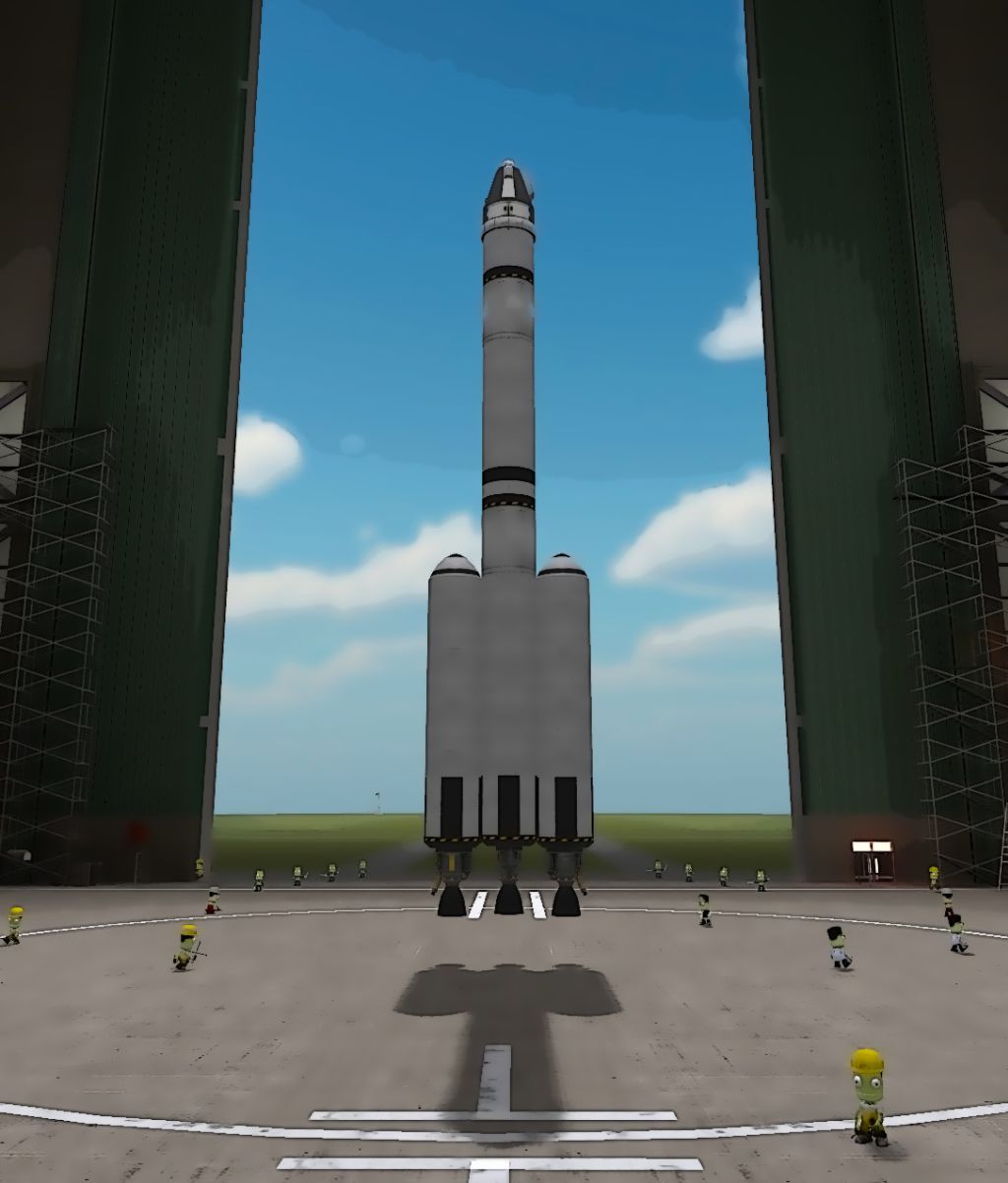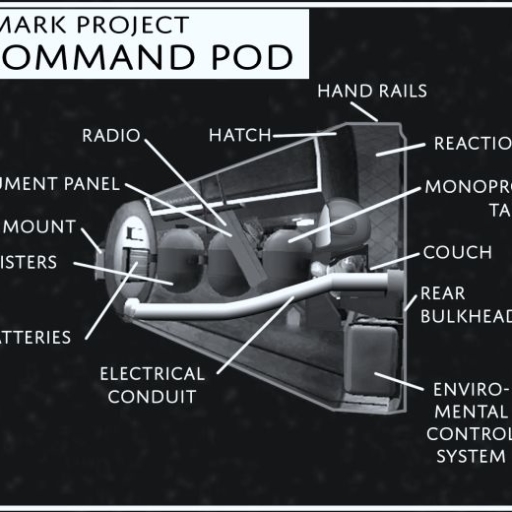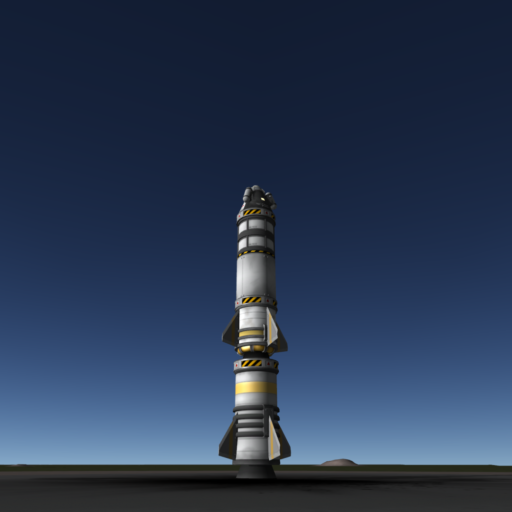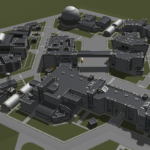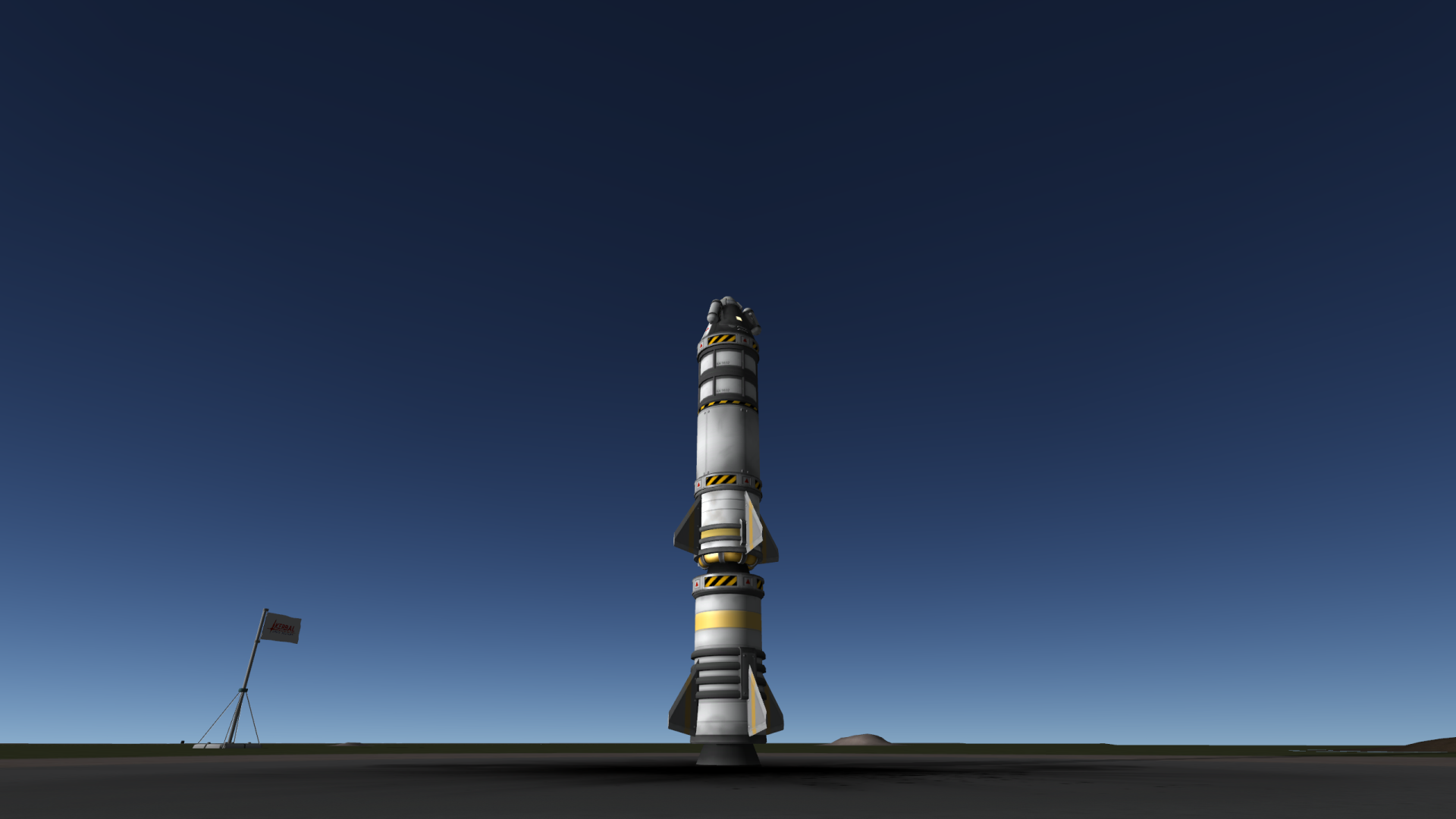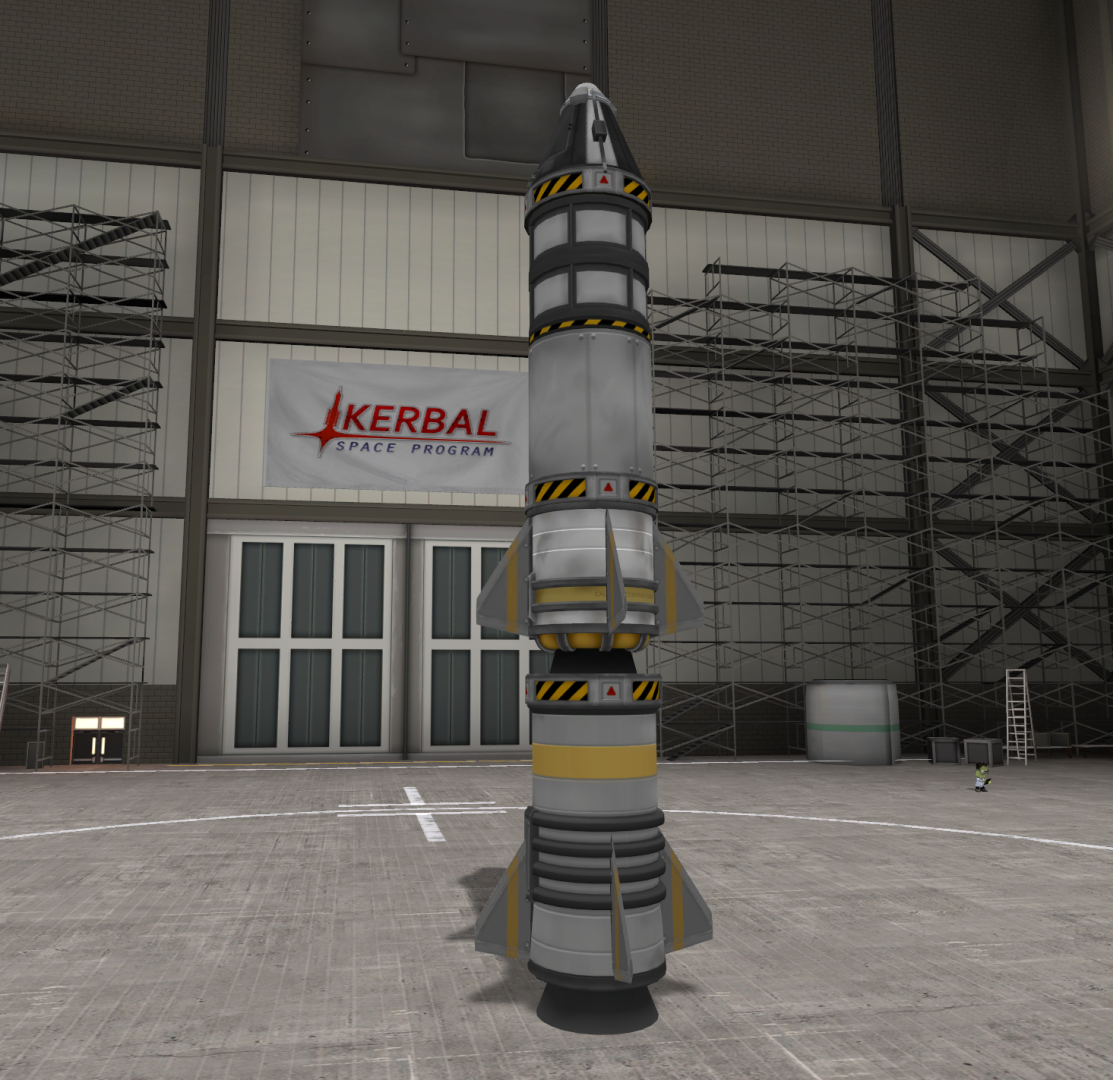Earlier today Take Two Interactive announced Kerbal Space Program 2!
Mark Four Announced
As expected, today the Kerbal Space Center held a press conference to announce the next flight in the Mark program, the Mark Four. This next launch promises to be the most technologically advanced and ambitious launch in Kerbin’s history. Unveiling a dramatic new launch vehicle configuration, they also announced that they feel that this is the first vehicle design that might have enough lifting ability to actually achieve orbit.
After the Mark Three test flight, the LV-T45 liquid engine’s performance impressed KSC’s engineer so deeply they have decided to go with an all liquid fueled rocket. This decision directly lead to a full redesign of the launch vehicle, allowing the engineers to consider a bewildering array of different designs, until slowly narrowing them down until this final design emerged- an unusual three-and-one arrangement.
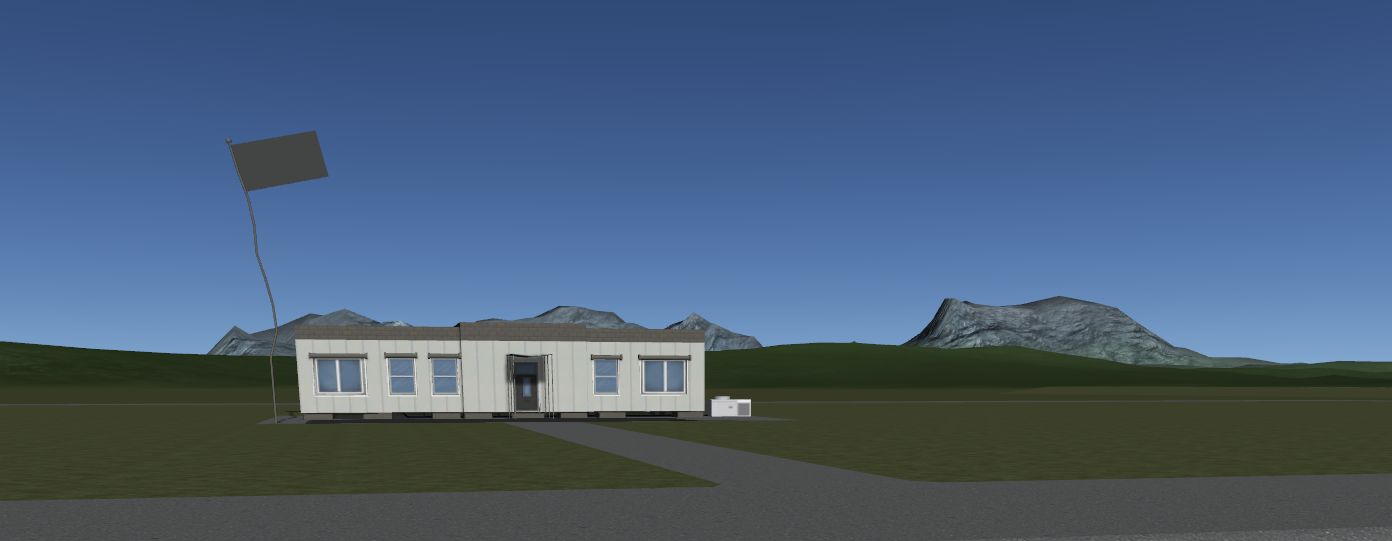
“We had considered a tremendous number of designs- when we were brainstorming no idea was disregarded. Soon we realized that a reasonably tight grouping of engines all pointing in the same direction seemed most effective,” said Wernar von Kerman (no relation to author) . “But even then, how many engines? What arrangement should they be in? A line? A circle? A triangle? The discussions and debates were endless, but in the end yielded what we feel is the optimal design.”
That design is based on the same LV-T45 third stage engine from the Mark Three mission (see our Mark Three vehicle description here), although attached to a much taller tank section. The designers wanted to be able to sustain the thrust from the LV-T45 engines for much longer than the Mark Three, so they needed to expand the available fuel. They achieved this by refining and redesigning the FL-T100 fuel tank making them bigger, thus holding more fuel and oxidizer. This new tank was designated the FL-T200, and even this new, bigger tank wasn’t big enough, and this issue became a major sticking point in the design process.

The breakthrough came when one engineer was attempting to carry more beverages than he had hands, and solved the problem by stacking one can on top of the other, and then picking both up from the bottom can. Realizing that he was now carrying twice as much malted beverage than before, he began wondering if something similar might work for the fuel, and soon the “stacked” fuel tank was born. We wish we could name this brilliant engineer, but due to the type of beverage being consumed that night, no-one can remember exactly who it was.
This stacked fuel tanking is used extensively on the Mark Four, and is the primary reason the craft is so tall and slender, topping out at twenty meters. But stacking only solved one problem- the duration that the liquid engines could run. But that left the other problem- all that fuel was heavy, and running a single LV-T45 could only lift so much.

Therefore the second major breakthrough on the Mark Four- and probably the most obvious to the casual observer. The first stage consists of three complete LV-T45 stacks, fuel tanks and engine, all bolted together in a line. The external two stacks are topped with a gentle dome to help divert airflow, and the central stack is where the second stage is boosted and decoupled.
This remarkable, some would say radical, design for the first stage proved to be the other major factor in why the Mark Four was so delayed. At least nine different designs for the first stage were investigated before the team settled on the three-in-a-row, second-stage-in-the-middle design (also known as the 3-2 variant) as being optimal in thrust, stability, and having the highest chance of mission success.
Another significant addition to this flight is the addition of a “Service Module”, which is kind of cargo hold for any additional equipment or supplies that will accompany a kerbonaut into space. The scientific payload on the Mark Three capsule was attached directly to the exterior of the Mk1 Command Pod, which was not an optimal place for them. For the Mark Four, the Service Module will contain the science equipment in an enclosed space just below the Mk1 Command Pod and will be shielded from reentry by the heat shield and return to Kerbin with the Command Pod.
The mission objectives for this flight- “the investigation of sub-orbital and ballistic near-orbit trajectories through orbital flight” will be covered in a follow up article shortly.
It is expected that the Kerbal Space Center will be announcing the next in the Mark program launches, presumably named the Mark Four.
This reporter has received multiple reports from a number of reliable sources which when taken together all seem to point to a major announcement in the Mark program within the next few days.
It has been an unusual amount of time since the launch of the Mark Three, and speculation is that the next mission is utilizing a radical new approach to rocket design. Keep reading Comm Net News to find out!
You might be interested in
Today we present our long awaited tour of the Mark One Capsule, in many ways the most important component of
Kerbal Space Center announced that they will be attempting to launch the Mark Three mission early today, a mission that
Today the Kerbal Space Center announced the move of the Mark Three vehicle to the launch pad, and that the
We’ve got a fair amount more information on the Breaking Ground expansion, detailing a number of the new parts, features, and experiments!
Head on over to the Kerbal forums to find out all the details!
You might be interested in
Earlier today Take Two Interactive announced Kerbal Space Program 2!
Just announced by Squad: Kerbal Space Program: Breaking Ground Expansion! A new DLC Expansion that adds robotic parts to enhance

Just announced by Squad: Kerbal Space Program: Breaking Ground Expansion! A new DLC Expansion that adds robotic parts to enhance your landers and probes, new surface features to give those landers something to investigate, deployable science packages that continue to take measurements over time, and a new space suit! All this will be yours for $14.95 USD, with the expansion released May 30th!
This new expansion is focused on exploration, experimentation, and technological advancement. Targets of specific scientific interest will appear on planetary surfaces- cryovolcanos, mysterious craters, and more!
New Features


Robotic Parts: New control mechanics will allow far more variety in probes and vehicles.


Surface Features: not just anomalies any more! New mineral formations, meteors, craters, and other curious features will be added to planets and moons. Collect scientific data with the new Rover Arm!
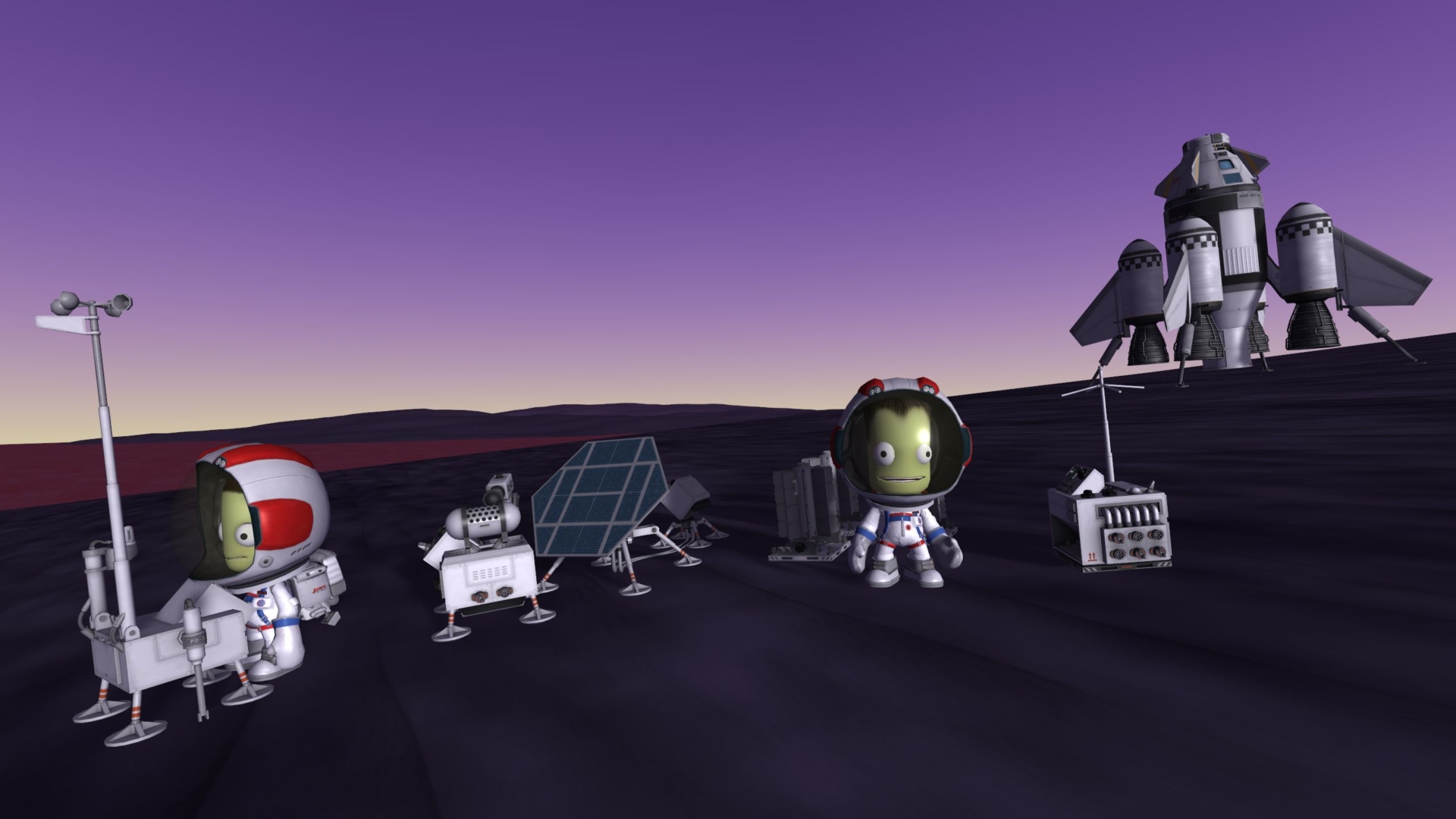

Deployed Science: science over time! Now your Kerbals can setup surface experiments that will take measurements and science over time! Seismometers, weather stations, oh my!
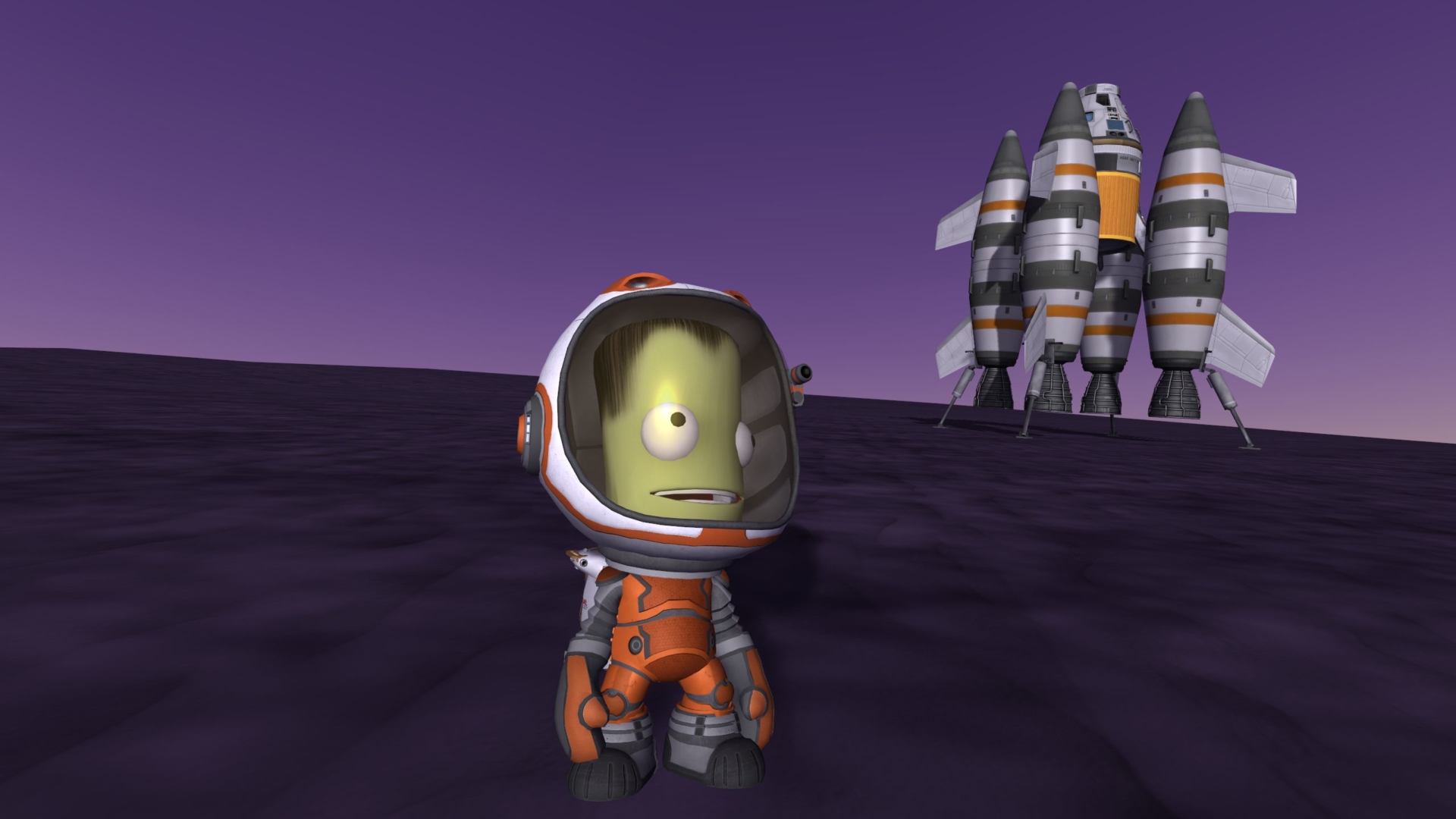

All that, and a new Space Suit too! All of these fine new features will be available May 30th for U$14.95 (free for those who purchased the base game prior to April 2013). It’s impressive that Squad has managed to keep this expansion under wraps for so long, with no major hints that it was coming until just a few weeks before release.
We here at CommNetNews are very happy with this news, as I have long thought deployable science was seriously lacking in the base game without mods. We will be integrating aspects of the new DLC into the core game we are writing about where appropriate- such as emulating the Surveyor missions prior to a Mun launch.
You might be interested in
Earlier today Take Two Interactive announced Kerbal Space Program 2!
We’ve got a fair amount more information on the Breaking Ground expansion, detailing a number of the new parts, features,
Mk1 Command Pod Tour
Today we present our long awaited tour of the Mark One Capsule, in many ways the most important component of the entire Mark Program. The capsule ensures that our brave Kerbonauts have an environment that protects them from the hazards of space, allows them to control the craft, and to perform other functions such as communications and scientific experiments.
As you approach the Mk1 Command Pod, one could be forgiven for being surprised at how small it is, a truncated cone just 1.1 meter tall and 1.3 meters wide at the base. The body of the craft is made of a specialized alloy that is designed to handle the extremes of spaceflight as best understood by the Research and Development team.

The Mk1 Command Pod is manufactured by Kerlington Model Rockets and Paper Products, Inc., and has a estimated cost of approximately 588 funds. The capsule weighs 800 kg with no consumables on board, and 840 kg fully supplied.
–Kerlington MR&PP Public Relations spokesperson
Kerlington has a long history of introducing ground-breaking new technologies, many of which are now considered indispensable for rocketry and aerospace engineering. This has fostered a strong community of loyal Kerlington fans, as well as a similarly large group of disgruntled competitors.
A bright stripe has been painted down the sides of the Command Pod to enable ground based telescopes to observe the rotation of the capsule in flight. A large hatch occupies the side of the craft, and features a window so that our intrepid Kerbonauts can see outside during their flight.

With the hatch open, two major aspects of the Command Pod become apparent. Directly inside with it’s back to the large flat end of the cone is the acceleration couch. This means that while on the launch pad, our Kerbonauts will be ‘sitting’ with their back towards the ground, which we are assured is the most comfortable position while the craft is launching- the thrust will be as if our Kerbonaut were lying down.
This couch has an unusual appearance and size, as it is shaped and contoured to the needs of a Kerbonaut while wearing their space suit. Directly to the side are connections so the space suit can access the air, power, and cooling supplies in the capsule.
Directly in front of the Kerbonaut while seated in the acceleration couch are the instrument panel and controls.
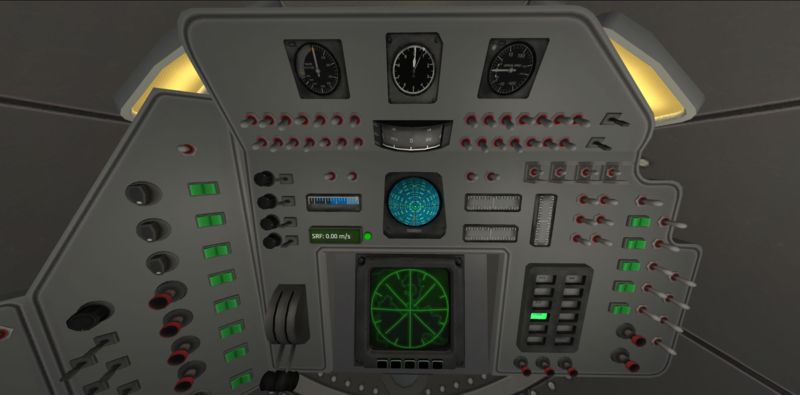
These instruments provide access to vital flight information such as speed, direction, power and fuel supplies, and spacecraft orientation. It also features warning lights in case something goes wrong with the on-board systems, various circuit breakers, the radio controls, and the controls to change the spacecraft orientation and the engines.
Because the engineers at the Research and Development division insisted on keeping the overall capsule size as small as possible, the designers of the Mk1 Command Pod have squeezed vital systems into every space they could think of in the pod. The area behind the instrument panel contains the bulk of the radio equipment, storage tanks for the air supplies for both the internal space of the cabin as well as for the Kerbonaut’s space suit, and batteries to supply electricity for all the internal systems of the capsule.
Tucked in behind and under the acceleration couch are the environmental controls and the reaction wheels. The environmental controls monitor and adjust the temperature inside the craft and the Kerbonaut’s spacesuit, as well as the composition of the atmospheric gases, ensuring that the quantity of oxygen and carbon dioxide do not go too high nor too low. This system is considered to be one of the most mission critical systems on the craft, and much work has been done to ensure it works correctly and that all of the ‘funny smells’ have been eliminated from it.
Also behind the acceleration couch is the reaction wheel assembly, a remarkable device that uses gyroscopes to maintain and adjust the orientation of the spacecraft. This device contains three gyroscopes not unlike the ones used as children’s toys, each oriented at 90 degrees to the others (think of the three different orientations that the sides of a cube have). By precisely adjusting the speed of these rapidly rotating wheels, a force can be applied causing the spacecraft to point in a new direction. If you’ve ever held a spinning bicycle wheel in your hands and attempted to move it about you’re familiar with how this unit works.

Running along the left side of the craft is a large conduit containing numerous electrical wiring harnesses (due to tradition, the left side of the craft is often referred to by the nautical term ‘port’, and the right side as ‘starboard’). This conduit allows connections between the batteries, the equipment in the instrument panel, the parachute systems on the front of the craft, and the equipment at the rear of the craft and through the rear bulkhead such as any science packages and the engines.
Asked about what the future holds for the Mk1 Command Pod and command pod technology in general, the engineers expressed enthusiasm. They feel that the Mk1 Command Pod is more than adequate for an attempt at orbital flight, where the pod will become an artificial moon of Kerben and circle the planet indefinitely. There is some concern regarding the thermal issues around an orbital attempt, but that the Research and Development people have been actively working on this issue and should have some ideas to announce shortly.
Looking further into the future, speculation runs to larger, more capable command pods seating two or even three Kerbonauts at the same time. These ideas would require advancements in not only the technologies in the Mk1 Command Pod, but also in the rockets used to launch them. But the dream of soaring through the heavens above Kerben remain compelling, and therefore the fine people at the Kerbal Space Center, the Kerlington Model Rockets and Paper Products, Inc. management and staff, and the staff and workers at all companies involved in the Kerbal Space Program will continue to give there all to ensure this dream will come to fruition.
You might be interested in
It is expected that the Kerbal Space Center will be announcing the next in the Mark program launches, presumably named
Kerbal Space Center announced that they will be attempting to launch the Mark Three mission early today, a mission that
Today the Kerbal Space Center announced the move of the Mark Three vehicle to the launch pad, and that the
Once again, the sun rose over the Kerbal Space Center, causing the buildings to cast long shadows across the grounds. Standing alone on the pad, the Mark Three vehicle seemed to be eager to prove to all of Kerbin what it could do. A test bed for numerous new technologies, it was clear that this day would witness a number of firsts.
Jebediah Kerman (no relation) had prepared himself for the journey ahead. A veteran of both the Mark One and Two flights, he had done this part of the routine countless times in training, and twice he had strapped into the capsule before it’s booster was ignited casting him skyward. This time would be different, however- if things went according to plan, he would go faster and higher than any Kerbal had ever done before, actually reaching a point where there was no more air at all. Then it would return back to Kerbin, bringing with it a valuable payload of science. Keep Reading
You might be interested in
Kerbal Space Center announced that they will be attempting to launch the Mark Three mission early today, a mission that
Today the Kerbal Space Center announced the move of the Mark Three vehicle to the launch pad, and that the
The Kerbal Space Center announced it’s next mission in the Mark Program, the Mark Three flight. This is the first
Mark Three to Launch Today
Kerbal Space Center announced that they will be attempting to launch the Mark Three mission early today, a mission that will test out many new technologies, and if all goes well, will propel Jebediah Kerman (no relation) into the inhospitable vacuum of space.
As always, CommNetNews will be there, and will give you the full details. Further details on the Mark Three vehicle and mission objectives can be read here.
You might be interested in
It is expected that the Kerbal Space Center will be announcing the next in the Mark program launches, presumably named
Today we present our long awaited tour of the Mark One Capsule, in many ways the most important component of
Once again, the sun rose over the Kerbal Space Center, causing the buildings to cast long shadows across the grounds.
Mark Three Update
Today the Kerbal Space Center announced the move of the Mark Three vehicle to the launch pad, and that the Mark Three will be piloted by the now veteran Jebediah Kerman (no relation).
Once again, the Pad Move Team performed their usual fine work and the Mark Three vehicle now stands on the pad, undergoing an extensive checkout and verification. Keep Reading
You might be interested in
It is expected that the Kerbal Space Center will be announcing the next in the Mark program launches, presumably named
Today we present our long awaited tour of the Mark One Capsule, in many ways the most important component of
Once again, the sun rose over the Kerbal Space Center, causing the buildings to cast long shadows across the grounds.
The Kerbal Space Center announced it’s next mission in the Mark Program, the Mark Three flight. This is the first flight since President John F. Kerman (no relation) delivered his lofty goal of a Mun landing. To achieve this goal, great strides are going to have to be made in space flight, and the Mark Three launch is the next great stride to be taken.
Standing more than three times taller than the Mark One and Two vehicles, the Mark Three will be testing out multiple new technologies developed at the Research and Development Department of the Kerbal Space Center (see our coverage here). The goals for the Mark Three launch are also bold, foremost hoping to get a Kerbal into outer space, a region where the air pressure drops below measurable levels, around seventy kilometers in altitude. Keep Reading
You might be interested in
It is expected that the Kerbal Space Center will be announcing the next in the Mark program launches, presumably named
Today we present our long awaited tour of the Mark One Capsule, in many ways the most important component of
Once again, the sun rose over the Kerbal Space Center, causing the buildings to cast long shadows across the grounds.





